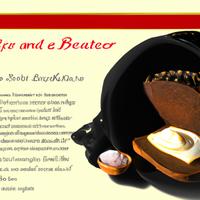
1 serving (100 grams) contains 250 calories, 10.0 grams of protein, 12.0 grams of fat, and 30.0 grams of carbohydrates.

Log this food in SnapCalorie

Nutrition Information
Calories |
595.2 | ||
|---|---|---|---|
% Daily Value* |
|||
| Total Fat | 28.6 g | 36% | |
| Saturated Fat | 11.9 g | 59% | |
| Polyunsaturated Fat | 0 g | ||
| Cholesterol | 71.4 mg | 23% | |
| Sodium | 1428.6 mg | 62% | |
| Total Carbohydrates | 71.4 g | 25% | |
| Dietary Fiber | 9.5 g | 33% | |
| Sugars | 4.8 g | ||
| protein | 23.8 g | 47% | |
| Vitamin D | 119.0 mcg | 595% | |
| Calcium | 119.0 mg | 9% | |
| Iron | 4.8 mg | 26% | |
| Potassium | 357.1 mg | 7% | |
* Percent Daily Values are based on a 2,000 calorie diet. Your daily values may be higher or lower depending on your calorie needs.
Food Attributes
Source of Calories
About Rye bread with butter and caviar
Rye bread with butter and caviar is a simple yet indulgent dish with roots in Scandinavian and Eastern European cuisine. This snack typically features a slice of hearty, fiber-rich rye bread spread with a layer of butter and topped with briny, nutrient-rich caviar. Rye bread is known for its denser texture and high fiber content, which supports digestion and provides sustained energy. Butter adds a touch of creaminess and a source of healthy fats, though it should be consumed in moderation due to its saturated fat content. Caviar, often made from sturgeon or other fish roe, is a luxurious topping rich in protein, omega-3 fatty acids, and essential vitamins such as B12. While this dish is nutrient-packed, its sodium content from the caviar and the fat from the butter should be balanced within a varied diet. It’s a flavorful, nutrient-dense treat best enjoyed in moderation.



